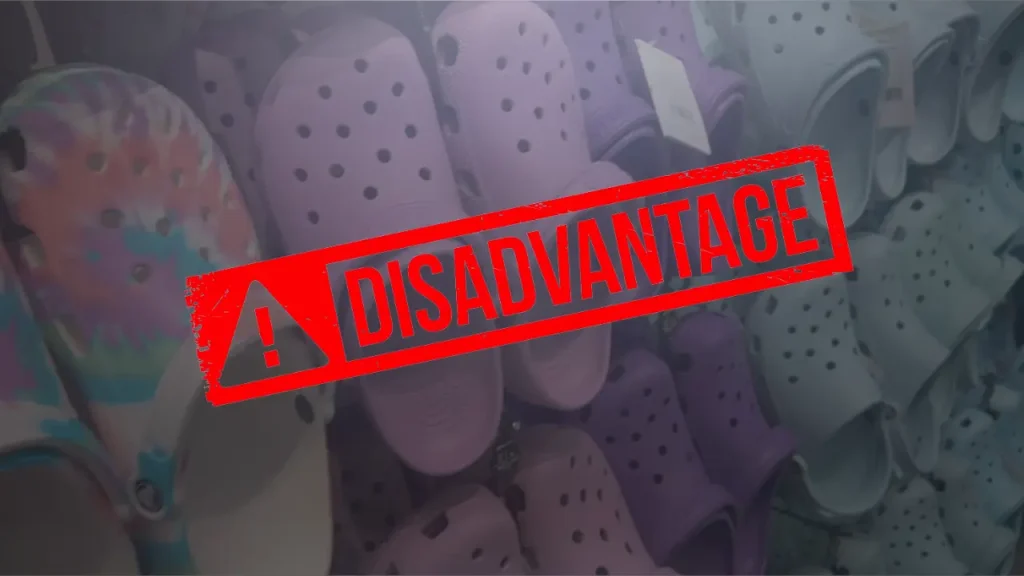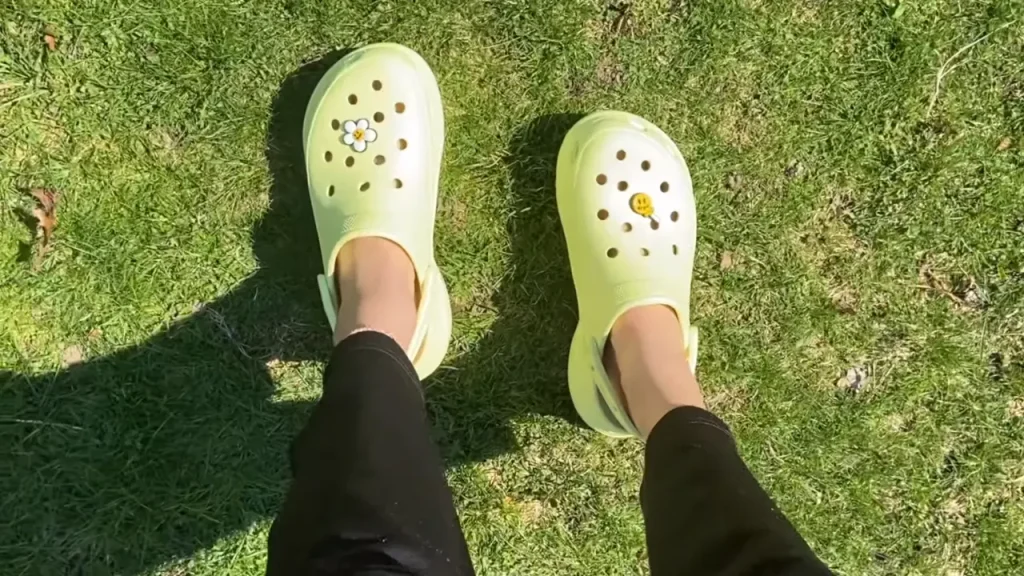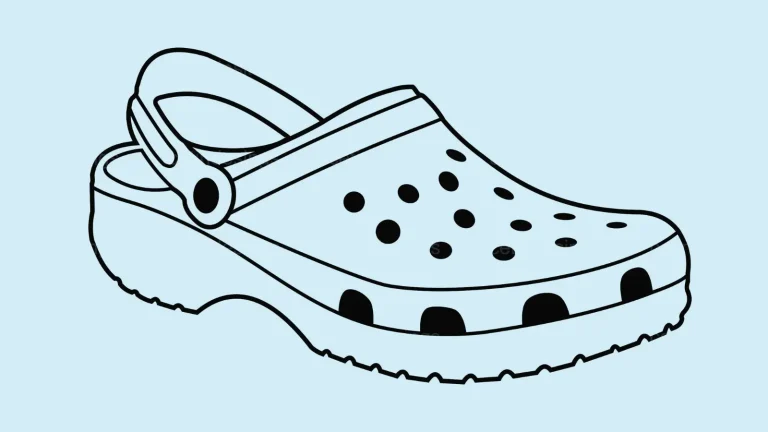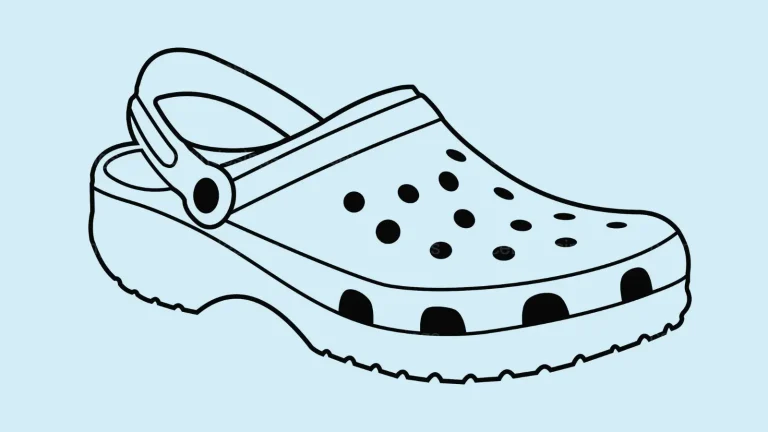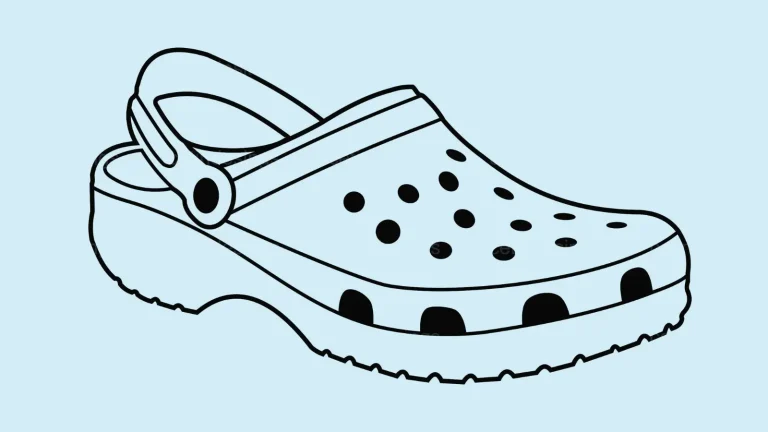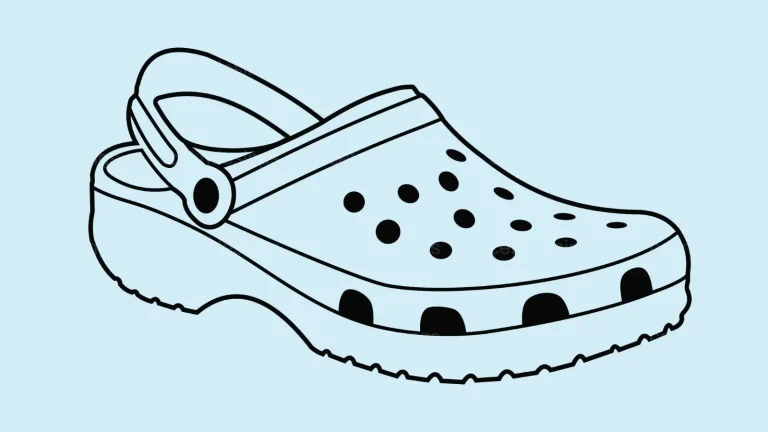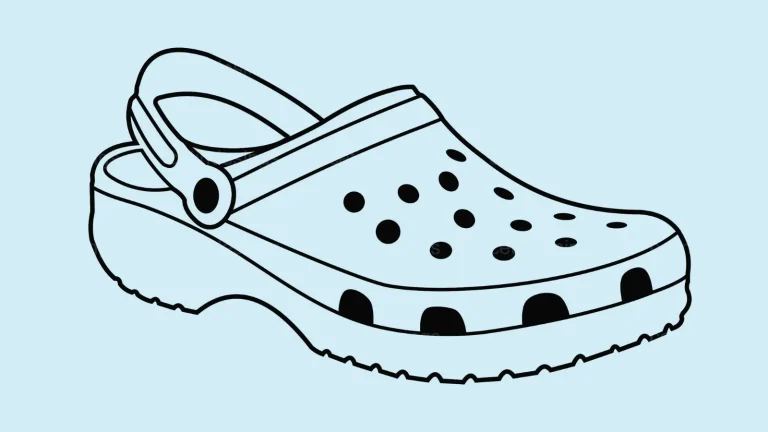10 Disadvantages of Wearing Crocs – (The Truth Exposed)
Crocs have recently increased acceptance, going from an eccentric footwear option to a worldwide phenomenon.
These foam clogs, which some people adore for their comfort and distinctive design, have divided opinions more than most other pairs of footwear.
The enormous passion for Crocs conceals a less well-known aspect that demands consideration. These seemingly innocent shoes hide several drawbacks under their eye-catching hues and simple design, which can make you hesitate before slipping into a pair.
Join us as we peel back the layers to find the hidden disadvantages of wearing Crocs and unveil the real story behind this trend.
10 Disadvantages of Crocs
Although Crocs may have become well-known because of their comfort and distinctive style, they have disadvantages. The following are 10 disadvantages to wearing Crocs:
1. Not Appropriate For Use In Formal Situations
Crocs are typically considered to be a sort of casual footwear and should therefore be avoided when attending more formal events.
Their adaptability is limited due to their unique style, which may not be appropriate for some occasions or professional settings due to the bright colors and distinctive design.
2. Gets Dirty Quickly And Easily.
Crocs have a notoriety for being difficult to clean. The Croslite substance has a high propensity for soaking up liquids and becoming discolored.
A simple wiping won’t remove these stains from the surface. The most effective method for cleaning Crocs is to hand wash them with a detergent designed for use in the washing machine.
In addition, the top features tiny holes that invite dirt and debris to become lodged there, making it difficult to clean them effectively. Many people just quit and end up wearing their clothes even though they are dirty or have other stains.
It’s crucial to remember that not all Crocs are waterproof, however. Some Crocs models are made to be waterproof or water-resistant, whereas others are not.
To ensure the Crocs you’re considering meet your waterproofing requirements, it’s always a good idea to look into those shoes’ special features and materials.
3. Irritations To The Skin And Other Allergic Reactions
Crocs may be an excellent choice for casual shoes for many people, but wearing them might aggravate skin conditions and allergies for others.
For instance, some individuals’ consistent act of wearing shoes has been linked to developing allergic contact dermatitis in themselves.
Crocs may create irritations because they allow dirt and debris into the shoe and cause your feet to sweat, further exacerbating the problem.
4. Not Good For A Long Period
Crocs are worn at all times of the day by most people. They have started wearing it everywhere, which has resulted in some of them complaining of developing blisters on their feet. They have started wearing it everywhere.
Because Crocs are composed of hard rubber, they might cause blisters if worn for an extended time. Excruciatingly painful blisters are caused by the foot touching the rigid rubber. Even if the discomfort decreases, the blisters will remain as a spot on your feet for quite some time.
5. There Is No Defense Against Pointed Objects.
Crocs do not provide any protection against jagged or pointed things, which is one of the most significant drawbacks of wearing them.
Because the outsole is made of rubber, it is possible that your foot could sustain an injury if you tread on something sharp, such as glass or metal. This is because it is conceivable that the material will be cut through.
The top of Crocs is naturally pocked with several holes, which begs the question, Why do Crocs have holes? These vent holes, also known as ventilation ports, have a special function.
They’re made to keep the feet cool and stop excessive perspiration by allowing air to circulate them. Crocs are suitable for water sports or damp settings thanks to the ventilation vents, which also aid in water drainage.
These holes have some disadvantages; however, they do fulfill the purpose they were designed for. The holes are a possible threat in regions with bushes and vegetation since thorns and other pointy objects can naturally pass through them.
Additionally, if hot beverages like coffee are spilled unintentionally, the perforated upper renders your feet more vulnerable to burns.
Therefore, while Crocs’ holes have ventilation and drainage advantages, they also call for awareness and prudence in specific circumstances.
6. Painful Blisters
It would be best if you were astonished to learn that a common complaint among people who wear Crocs is that their feet smell after wearing them.
Crocs cause your feet to perspire due to the rubber material, and they smell as they perspire more.
Even if you wear socks with these, it won’t make much difference in how they perform. Imagine how dangerous this rubber could be, considering it even causes socks to sweat.
No one likes having smelly feet; therefore, even if you love Crocs, you should only wear them for short periods.
7. Not Suitable For Use When The Weather Is Stormy
Crocs are not meant to be worn outside in wet or chilly weather because they are not waterproof. They have little holes all over the upper that let water and chilly air through, making your feet freeze solid if you wear them.
It is impossible to wear them in wet or snowy conditions; if you try, it will simply result in your feet becoming soaked.
If you live in a region that gets a substantial amount of rain or snow, this is a serious problem, and it is not worth the risk at all to wear them when there is a possibility of terrible weather.
8. They Don’t Come In Half Sizes
Crocs shoes are only available in full sizes due to the nature of their design, and the company does not carry any half sizes in any of its product lines.
When purchasing shoes, you should go for the larger size if you often wear a shoe that is a half size larger than you normally wear.
This does not always work, and it may result in your shoes not fitting properly if you are a half-size. Anyone who is a half-size knows this.
If your shoes do not fit properly, you may experience issues with foot pain, produce friction that leads to toe deformities, and have problems with your nails.
9. Unreliable Outsole
The outsole of a pair of Crocs is constructed from a flexible and rubbery substance, very similar to the material used to make flip-flops.
Because it is made of flexible rubber, the outsole makes it difficult to walk on uneven ground, such as gravel.
Additionally, this outsole does not give dependable traction, increasing the wearer’s risk of slipping and falling when walking on smooth surfaces. The majority of Crocs do not have a nonslip sole. The only Crocs styles that are non-slip are the clogs and the flats.
Although the longevity of the outsole may be a factor in why certain people hate Crocs, it is essential to keep in mind that individuals’ perspectives on fashion and individual taste can vary quite a little.
Crocs are well-known for their distinctive appearance due to their rubber-like material, feature ventilation holes, and unique profile.
The style might not appeal to everyone, and some might even consider it out of style. In addition, the conception of Crocs as footwear that prioritizes ease and functionality over aesthetics may not sit well with certain fashion tastes.
When it comes down to it, individual tastes and preferences for how things should look are key factors in why some individuals may not like Crocs.
10. They Do Not Have Adequate Heel Support.
Weiser points out that Crocs do not have a back and do not support or regulate the heel. Because of this, you run the risk of developing heel discomfort as well as tendonitis in the heel.
The absence of heel support might make it more difficult to maintain stability when you walk, increasing the likelihood that you will trip or fall. Research indicates that wearing Crocs does not assist in maintaining your balance any more than wearing flip-flops.
What Are Some Of The Possible Dangers To One’s Health That Are Connected With Wearing Crocs?
Crocs can cause various foot problems, including fungal infections, blisters, and general pain in the wearer’s feet when worn for long periods.
Crocs are notorious for causing foot infections due to their pliable and porous materials, which can serve as a fertile breeding ground for fungi and bacteria.
In addition, because Crocs don’t offer much support, wearing them can result in blisters, discomfort, and even agony in the feet, legs, and back.
Before donning a pair of Crocs, individuals who have foot ailments that were already present or those who would be standing for extended periods should carefully examine the potential health hazards.
Bottom Line
Although wearing Crocs can be stylish, they aren’t always the most comfortable option. They have many disadvantages, including poor stability and support, breathing problems, and trouble navigating rough terrain.
Additionally, they contribute to foot issues like bunions an corn. Additionally, their design makes them unsuited for bad weather and impractical for daily wear.
Delve Into Related Articles:
- Can You Use Acrylic Paint On Crocs?
- Can You Wear Crocs To The Airport?
- Why Are Lightning Mcqueen Crocs So Expensive?

Hello, my name is Max Anderson, and I’m happy to welcome you to Shoespectra, the top website for shoe lovers. As the owner and inspiration behind this blog, I contribute a wealth of knowledge and a sincere enthusiasm for shoes to every piece of content I make.

